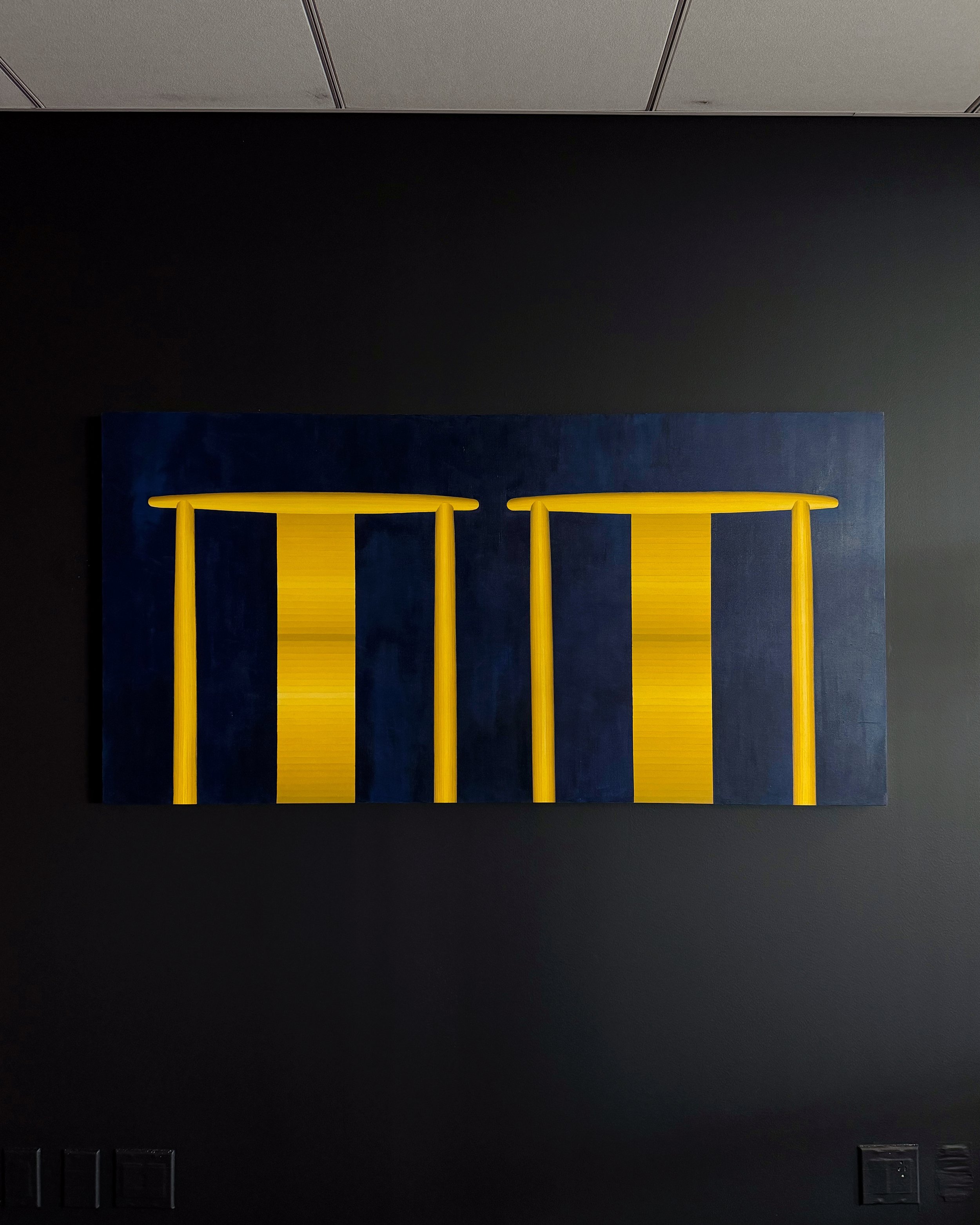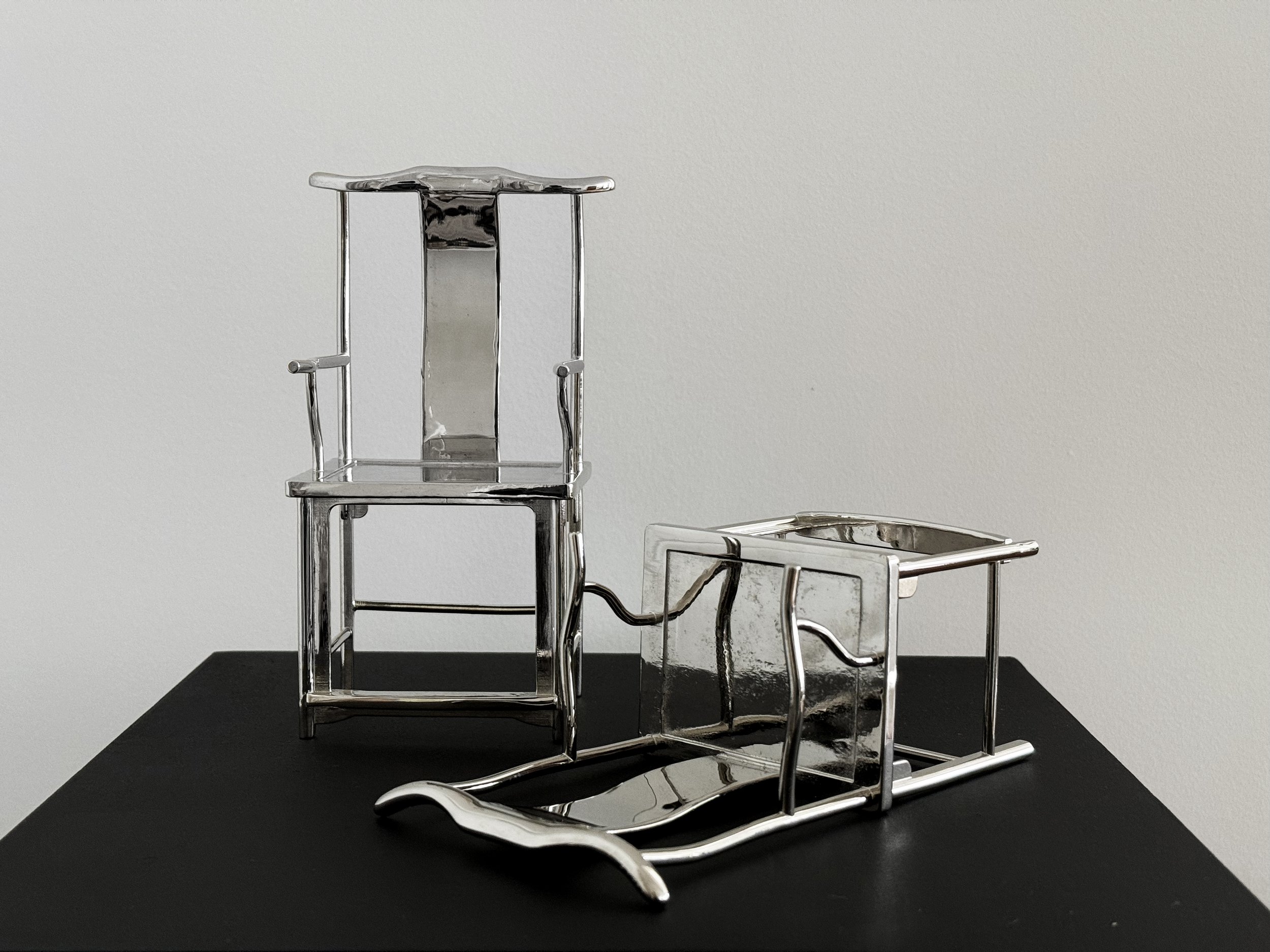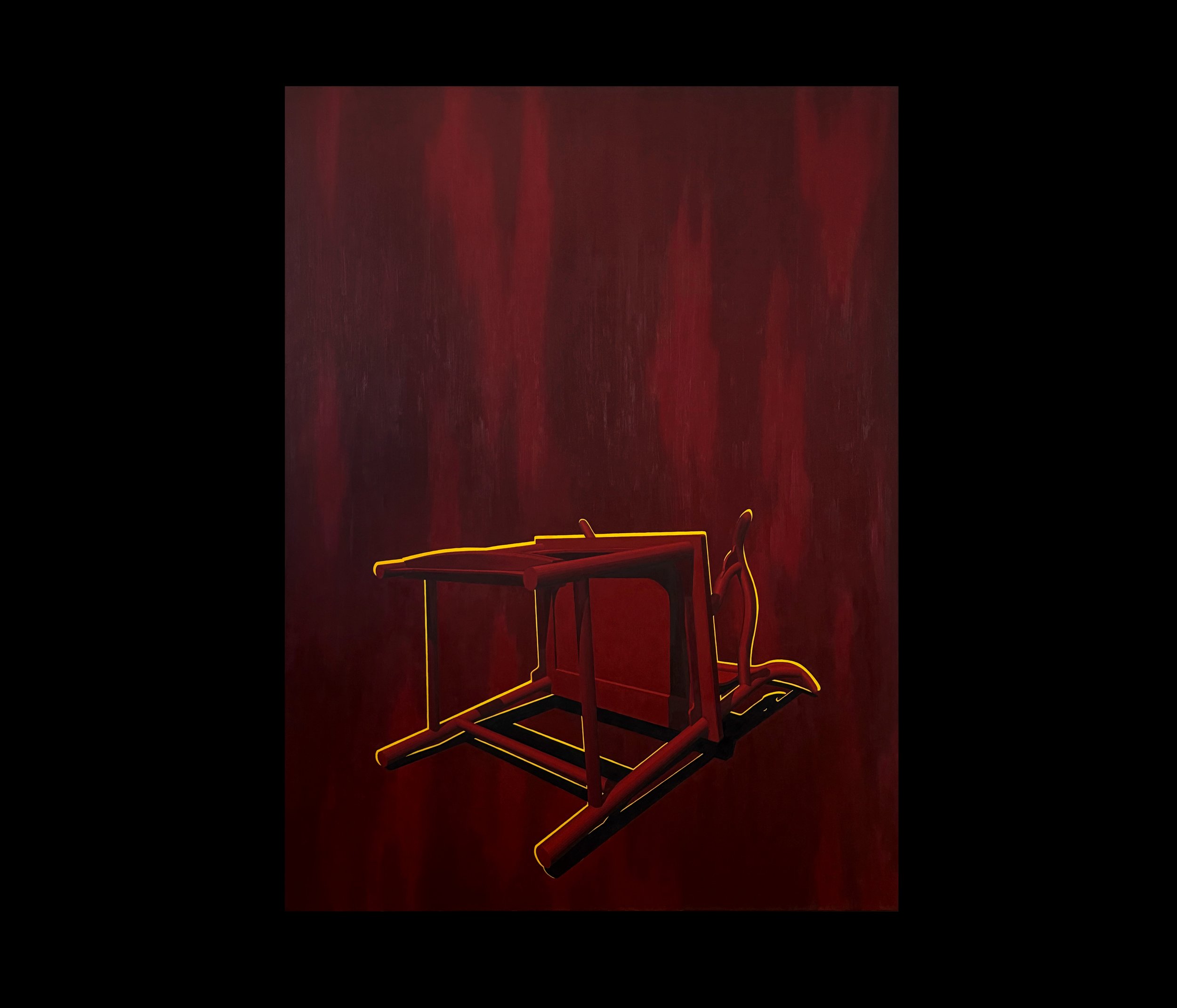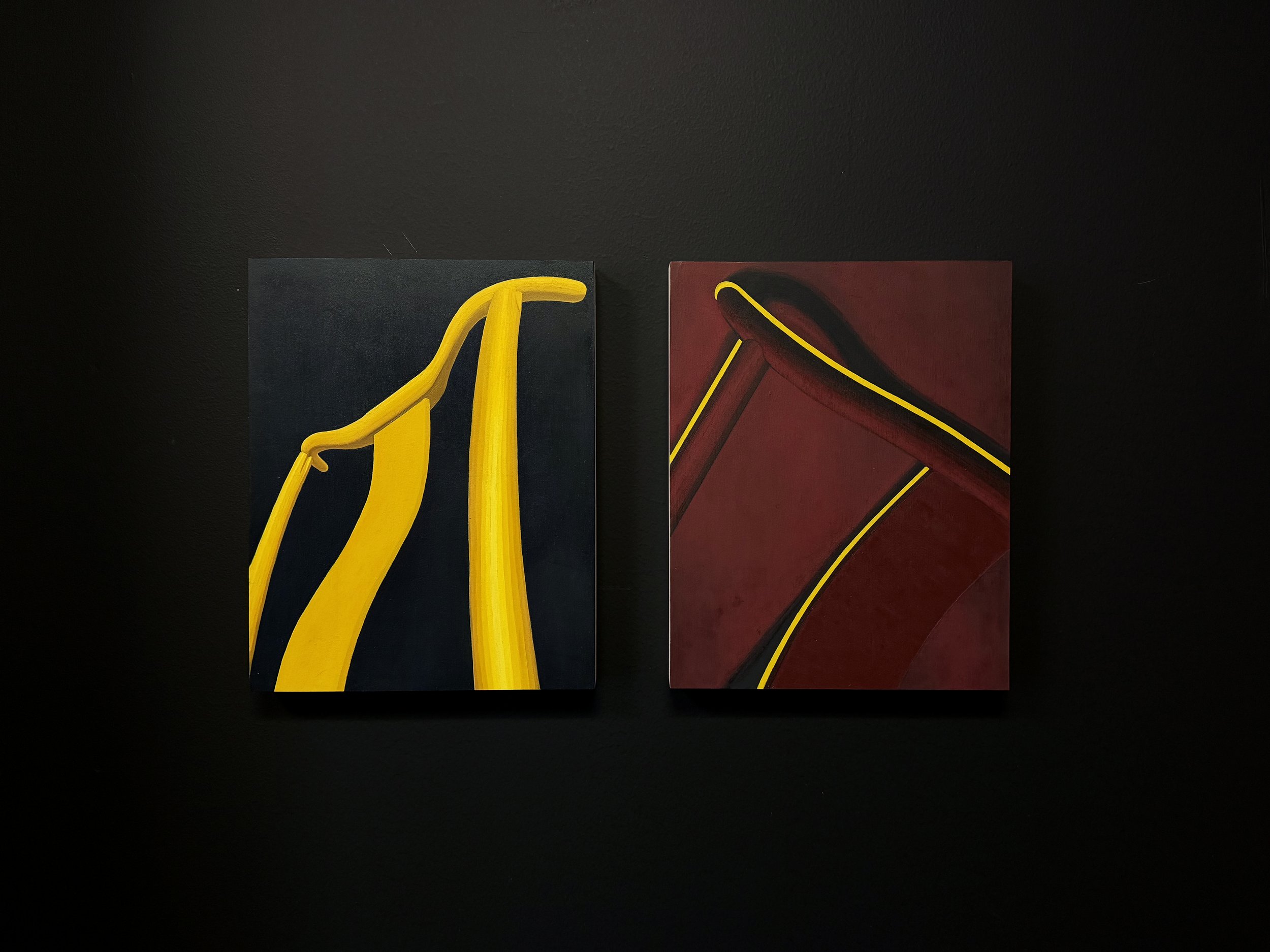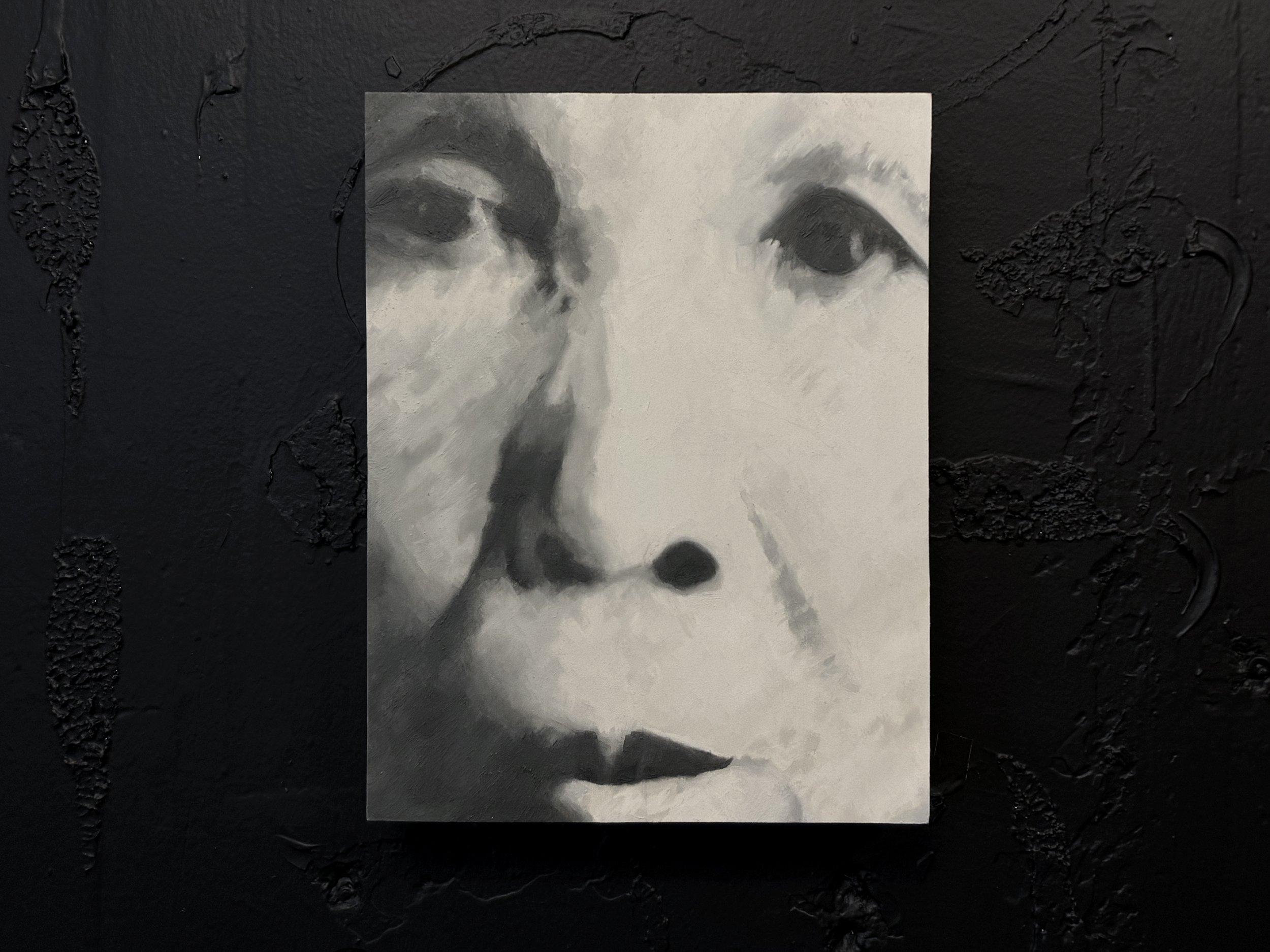SPRING/BREAK ART SHOW NYC 2024
“SILENT ECHOES” CURATED BY ANNE-LAURE LEMAITRE
In 'Silent Echoes' Benny Or uses the yolk-back chair as a symbol and motif to embody a deeply personal inner quest into his past
Matriarch, 2024
EXHIBITION TEXT BY CURATOR ANNE-LAURE LEMAITRE
Our world is filled with objects, most of which have a defined purpose and codified cultural significance, tied to class, usage, and perceived value. But objects, while having a broadly accepted overarching exterior status, can also carry an inner personal meaning which infuses them with intense intimate symbolism.
Introduced during the 10th century and popularized during the Ming Dynasty, the yoke-back chair is an iconic piece of Chinese furniture and has been a staple of Chinese homes for centuries. Also dubbed the ‘official’s hat chair’ for its horizontal crest, the extremities of which are ideal to hang a hat, this seat carries the aura of its long standing presence and charged history.
In the past year, Benny Or, celebrated designer and self taught artist has been on a journey towards self discovery through personal history and especially the uncovering of his mother’s lineage’s past. Benny’s family was powerful in pre-communist China. His great grandmother was a reputed shamanic healer in the 1930s. During the communism take over of the late 30s/early 40s, the family was depleted of its wealth and Benny’s great grandfather, a court official, hung himself. The family ultimately lost everything.
Yokeback 2: Double Yoke
Learning about this past deeply impacted Benny, who started feeling an intense connection to this great grandmother matriarchal figure and her shamanic gifts. As Benny started painting, exploring the presence and essence of everyday culturally significant objects, the figure of the yoke-back chair started haunting him. The chair, a traditional representation and symbol, but also functionally a tool for the body to rest and be held, evoking past, lineage, reverence for institutional knowledge and craftsmanship, became a vehicle and connecting point for his inner explorations of this newfound familial past.
As one enters ‘Silent Echoes’ they immerse themselves in a darkly painted room, a monochrome environment mirroring the artist’s studio’s colored walls. In it, a small close up black and white oil portrait of a woman, the only image Benny has of his great grandmother, blurred and textured, is surrounded by a series of precisely painted yoke-back chairs portrayed from various angles. These paintings are simple, minimal representations made to outline the sinuous nature of a re-prespectived past.
Facing the portrait, a toppled yoke-back chair brings to mind the downfall of a certain way of life, or even more intimately, the artist’s great grandfather’s final moments in their silent violence. A couple of identical chair crests, side by side evoke the mirroring aspects of transgenerational connections. Cropped unusual angles made paintings become almost abstract, as to express a broader story recomposed from disparate sporadic anecdotal details. A metal plated sculpture warped representation of the iconic seat-a reference to silver as a means to convert property into movable assets-lives at the edge of physical reality and inner projections, in the inbetween occupied by a narrated history which can only remain incomplete while still having tangible ramifications in the present.
In the space, plays a song, 等著你回來 (Waiting for you come back), performed by 白光 (Bai Guang), famous singer and actress at the time when Benny’s family was leaving China. This song, which the artist discovered randomly and perceives as a message through which his shamanic matriarch whispers her calling: for her great grandson to come back to her.
FEATURED WORK
